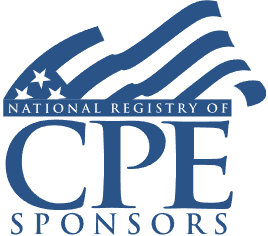Liquidation of S Corporations: Mastering Tax Implications of Liquidating Distributions
Case Study on Planning, Calculations, and Property Dispositions

Course Details
- smart_display Format
On-Demand
- signal_cellular_alt Difficulty Level
Intermediate
- work Practice Area
Tax Preparer
- event Date
Thursday, December 5, 2024
- schedule Time
1:00 p.m. ET./10:00 a.m. PT
- timer Program Length
110 minutes
-
BARBRI is a NASBA CPE sponsor and this 110-minute webinar is accredited for 2.0 CPE credits.
-
BARBRI is an IRS-approved continuing education provider offering certified courses for Enrolled Agents (EA) and Tax Return Preparers (RTRP).
This course will delve into a case study on the planning, tax calculations, property dispositions, and dissolution filings required to liquidate an S corporation. The panel will brief participants on the general rules stated in IRC Section 1371, tying liquidation rules back to those applying to C corps, and detailing the gain/loss on distributions in exchange for stock, as well as outline two or three scenarios illustrating the rules in action.
Faculty

Ms. Wilson concentrates her practice on federal tax planning and structuring and represents clients in a wide variety of complex federal tax matters, with a particular emphasis on pass-through entities such as partnerships, S corporations and real estate investment trusts. Specifically, she focuses on advising clients on the formation, operation, acquisition and restructuring of pass-through entities.

Mr. Jamison is Professor Emeritus of Accounting at Indiana University, Purdue University, Indianapolis (IUPUI). His principal area of specialization is S Corporations. He is the sole author of S Corporation Taxation, and co-author of Multistate Tax Guide to Pass-Through Entities, both of which are published annually by CCH, a Wolters Kluwer business. He is a regular contributor to Land Grant University Tax Education Foundation, Inc. National Income Tax Workbook and has contributed to Federal Tax Workshop. He presents advanced and update S Corporation seminars for various states' CPA societies and to other professional organizations. He is a member of the AICPA S Corporation Technical Resource Panel. He consults on S corporation and other business entity problems and has secured letter rulings from the IRS.
Description
S corporation liquidations generally are subject to the same rules as C corporations. However, the lack of entity-level tax in most cases creates different tax considerations. In some cases, there may be some corporate-level problems, such as the built-in gains taxes. Tax advisers must be aware of the Subchapter C rules, especially those concerned with gain or loss recognition on the distribution.
Also, Subchapter S contains the rules concerning the pass-through character of income, gain, and loss. Consequently, tax professionals advising the corporation and its shareholders must be able to calculate the tax impact for shareholders, who ultimately bear the tax burden of the liquidation.
Crucial to tax-efficient planning in S corp liquidation situations is the accurate calculation of S shareholders' outside tax basis in their shares and the S corp's inside tax basis in its assets. Advisers must have a comprehensive basis schedule for all shareholders. Other special rules concern the distribution of installment receivables and debt instruments held by shareholders.
Finally, there are some special considerations for unsuccessful corporations. Because a complete liquidation will cause any shareholder's suspended losses to be extinguished, the timing of the liquidation is a significant issue in planning.
Listen as our experienced panel provides a detailed examination of the tax rules and planning considerations to address in the dissolution and liquidation of S corporations and offers case studies to illustrate tax treatments to shareholders under various liquidation scenarios.
Outline
- Rules for sale or other distribution of assets in connection with the liquidation of an S corporation
- Tax issues regarding character and timing arising from common transactions in a dissolution or liquidation
- Post-tax reform considerations
- A case study illustrating liquidation of S corp
Benefits
The panel will discuss these and other key issues:
- What are the rules for recognizing income and losses in the year of liquidation of the S corporation?
- How does the S corporation report liquidating installment receivables and other property distributions?
- How do the S corporation and the shareholders report distributions of encumbered property, including situations where the debt exceeds the value of the asset distributed?
- What are the ramifications to shareholders after liquidation regarding basis, payment of claims against the corporation, and transferee liability?
NASBA Details
Learning Objectives
After completing this course, you will be able to:
- Determine the rules for recognizing income and loss in the year of an S corp liquidation
- Identify how an S corp reports liquidating installment receivables and other property distributed
- Distinguish between the interests of buyers and sellers
- Determine advantages and disadvantages of selling or purchasing a business as either an asset or stock sale
- Recognize the tax characteristics of the target company and how they may impact the buyer and seller
- Determine how to calculate and document shareholders' basis in S corporations
- Field of Study: Taxes
- Level of Knowledge: Intermediate
- Advance Preparation: None
- Teaching Method: Seminar/Lecture
- Delivery Method: Group-Internet (via computer)
- Attendance Monitoring Method: Attendance is monitored electronically via a participant's PIN and through a series of attendance verification prompts displayed throughout the program
- Prerequisite: Three years+ business or public firm experience at mid-level within the organization, preparing complex tax forms and schedules, supervising other preparers/accountants. Specific and detailed knowledge and understanding of S corporation stock basis rules, S corporation ownership structure, operating agreements and distributions; familiarity with the rules governing Accumulated Adjustment Accounts (AAA), and difference in treatment of debt between partnerships and S corporations; and basis calculations for S corporation shareholders according to IRC sections 1366 and 1367.

Strafford Publications, Inc. is registered with the National Association of State Boards of Accountancy (NASBA) as a sponsor of continuing professional education on the National Registry of CPE Sponsors. State boards of Accountancy have final authority on the acceptance of individual courses for CPE Credits. Complaints regarding registered sponsons may be submitted to NASBA through its website: www.nasbaregistry.org.

Strafford is an IRS-approved continuing education provider offering certified courses for Enrolled Agents (EA) and Tax Return Preparers (RTRP).
Related Courses

Form 1041 Schedule D: Reporting Capital Gains for Trusts and Estates
Available On-Demand

Closer Connection Exception: Determining Tax Home; Treaty Tie-Breakers, Form 8840
Thursday, April 10, 2025
1:00 PM E.T.
Recommended Resources
How CPE Can Bridge the Gap Between What You Know and What You Need to Know
- Career Advancement